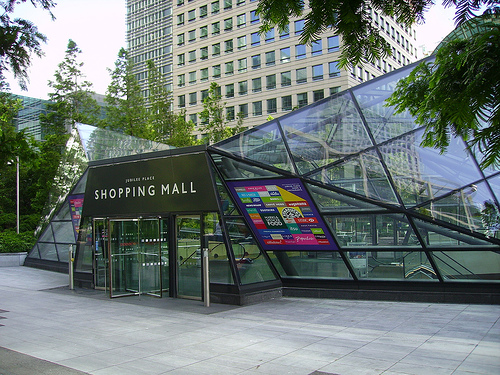 This is the final post of a three-part series regarding how to be a landlord in a lower-income or urban community.
This is the final post of a three-part series regarding how to be a landlord in a lower-income or urban community.
In the first two posts, I used teeter totters to show how the Leading Landlord Principle connects with the Broken Windows Theory. To bring you up to speed, here’s my position: in troubled communities, landlords have a huge (typically unused) ability to use their influence to improve their “location” and raise their own property values.
I also promised to give you some practical steps.
Here are 6 basic tactics to help you deploy your influence so you can reduce disorder in a tough neighborhood.
Lead Within Your Own Property Lines by:
1. Enforcing house rules and basic rules of decency. This may be too obvious to include, but it is critical. Tiny infractions must be dealt with swiftly. Your residents need to know that clearly written rules are in effect. This will eventually makes your residents feel more comfortable.
2. Eliminating all illegal activities on your property. If you suspect a resident is involved in unscrupulous activities, then pay them to move out. Don’t worry if your short-term cash flow suffers, focus on patient equity. You can find details on how to do this im my E-Course. Click HERE for details.
3. Improving your curb appeal. Your complex must always be undergoing a make over. Incremental improvements are fine, but you have to maintain a forward momentum. It’s a strong subliminal signal that attracts good tenants and repels crime.
Lead Beyond Your Property Lines by:
Think of your rental property as being one store in a retail strip mall. Your customers have to walk past or through other people’s stores to get to you. Your business is interdependent with other owners.
The problem is, in troubled neighborhoods there are no effective mall managers coordinating the “store owners.” A leading landlord must do what a mall manager should by:
4. Communicating the news – Collect and organize names,phone numbers, and email addresses of landlords and residents. Start a Facebook page and use social media. Test out your communication network every time there’s relevant good news. Communication networks are strong crime deterrents. Re-tweet, forward and share every piece of good news that you can about your neighborhood.
5. Coordinating the “stores” – Work with other owners, especially landlords, to hold joint activities. It doesn’t matter if the event flops; it’s just a means to build relationships – the juice needed to solve problems.
6. Marketing the entire block – Pick up trash in front of other people’s “stores.” Help everyone realize the block is interdependent – their “storefront” affects yours. Cultivate a whole block mentality.
These basics will help you create an atmosphere that encourages a vibrant community. Be consistent, and after a couple of years you’ll find the neighborhood isn’t so tough anymore.
Would You Like to Know More
These six steps will get you to the finish line however if you want to progress faster and face less resistance, you should consider my online course. Check out the E-Course How to Build Wealth with Inner City Rentals and prepare yourself for a successful wealth building journey.


Al, I’m really enjoying your blog. The topics you are writing about hit at the heart of what allows distressed communities to enjoy a resurgence- the care and attention of those who are invested, be they landlords or homeowners.
At this moment in our nation the very concept of broad-based homeownership is being questioned, and the financial sector is making it extremely difficult for many otherwise qualified families to become homeowners. Therefore if we want to see stabilization and improvement in our neighborhoods it is even more important NOW for landlords to be leading those efforts.
Most landlords are benignly passive about management of their properties. A few fall to the category of slumlords, and a rare few rise to the level of Leading Landlords. Imagine the potential impact if the slumlords became passive landlords, the passive landlords began implementing at least minor but steady improvements, and the Leading Landlords helped to focus the efforts of owners around their properties in addition to their efforts on their own properties.
Keep up the great work.
I believe having effective management team is a critical key to maintaining values. A manager can guide owners as to improvements the property in order to increase rental income. Assisting them in finding and maintaining long term tenants who would be invested in the community.
Al,
Thank you for your blog. In today’s economic unsteadiness, it is so important for landlords to pay attention, be active on their rental street, and actively participate in their rental communities. So, thank you for leading the way and teaching land lording 101. I can imagine the impact of the implementation of the some of the most simple ideals which you talk about.
Onwards!
Al,
Your blog is definitely unique and forward thinking. And I can see from your Oak Park site the difference your philosophy has made. Keep doing what your doing! Scott
Al, your blog has given me a different perspective on the management of rental communiities in lower income neighborhoods. It’s a shame that so many landlords are so passive. I hope that other landlords read your advice and follow your lead. Your suggestions are simple to implement and can positively impact and improve the rental communities and the lives of the tentants who reside in them.
I think that some of the ideas you presented are applicable to tentants as well. By communicating and working together, tenants can ban together to create the change they want to see.
Personally, I’ve been inspired to take action in my own community. My apartment building is the eyesore of my block, and it seems that my landlord isn’t going to do anything about it. I am going to talk to the other tentants and devise a plan to improve our building’s curb appeal. We may have to spend our own time and money on the project, but it will be worth it and maybe even make our landlord pay more attention to his property.
Good for you Ms. Eskidsen! Merely saying “hello” to fellow tenants makes a BIG difference. Starting a curb appeal project is the way to go. Thanks for your leadership and initiation. Every community needs someone like you.
Al, I read your blog. I really like the “Broken Window Theory”. It’s a lot like my findings about empty lots. If you let the grass grow tall it becomes weeds and irresponsible people come along and dunp their trash in it because they think no one will care if they do, but if you keep the lot clean and cut, the number of carefree folks deminish because they acknowledge and respect the area.
Well keep it going and spread the word around while you’re at it and help our communities spring up new seeds that will result in positive growth acroos the land.
Al,
Thank you for creating this helpful blog and for sharing the best practices you have learned being a landlord in an inner-city community. I live right down the block from one of your properties and I have witnessed first hand the positive impact your efforts have had on the neighborhood. I hope many others will follow your example. Keep up the great work!
Al, I read your article on “How to Profit from Landlord-Driven Neighborhood Restoration.” And I believe this is a blueprint to how to turn around economically challenged neighborhoods. The property owner leading the team to revitalize neighborhoods so that everyone has a safe and decent place to live is not only the profitably thing to do It’s the right thing to do! Through the property owners concern about the community renters will feel a connection with the owner and the community thereby creating a sense of community and belonging enhancing the property owners property. This is a “win win” for the property owner and the community. Congratulations on a well thought out formula for revitalizing urban communities.
Thanks Roy. I’m looking to build on these concepts and collect best practices from others to make it easier to for anyone to their neighborhood. Send end your examples and ideas.
Great advice to extend your duties to more than inside the home. Communication is very important to maintaining a good relationship with tenants. Thanks for the tips!
Thank you for these great tips! I am the owner and I found this article very educative!